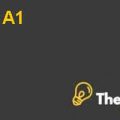Lady M Cofection Financial Analysis Case Study Solution
Basic Earning Power
The basic earning power is calculated by dividing operating profit from total assets of the company. This ratio provides an information that how efficiently the company is utilizing its total assets in generating profit for the company. Hence, the basic earning power of the company has increased from previous year i.e. from 53.88 percent to 63.54 percent which provides an evidence that the company’s basic earning power has increased as compared to the previous year.
Return on Assets
The return on assets is calculated by dividing net income from the total assets of the company. This ratio provides an indication that how efficiently the company is managing its assets in generating profit for the company or how efficiently the assets are being used by the company to generate the net income. (MIHIR A. DESAI, 2015) Moreover, the return on asset of the company has increased from 22 percent to 31 percent which provides an evidence that the assets are being used efficiently by the company in order generate the net income for the company.
Return on Equity
The return on equity is calculated by dividing the net income from the total stockholder’s equity. Return on equity provides an evidence on how the company is using stockholder’s equity in generating profit for the company. Hence, the return on equity for the company has declined from 75 percent to 73 percent but the net income of the company has inclined. This information provides an indication that the company stock holder’s equity has increases in comparison with the net income of the company.
Commons Size Analysis
The common size analysis of the company is performed on balance sheet and the income statement of the company. The commons size analysis of the balance sheet is performed by dividing all the components of the balance sheet from the total assets component of the balance sheet, whereas the common size analysis of the income statement is performed by dividing all the components of the income statement by the revenue of the company. However, it is analyzed that the accounts receivable of the company has declined from the year 2012 to 2013, which provides an indication that the company is managing its collection of accounts receivable efficiently. Moreover, the fixed assets of the company increased form the precious year which provides evidence that the company has invested in fixed assets (MIHIR A. DESAI, 2015). The short term loan of the company has declined but the long term loan of the company has inclined in comparison to the previous years. Moreover, the total stockholder’s equity of the company is also inclined which provides an indication that company’s equity size has increase. Hence, all these sign of the common size balance sheet analysis appear to be positive for the company.
The analysis of income statement through common size analysis of the company assist the company to determine the several components of the income statement of the company. It is determined that the cost of goods sold and the operational cost of the company have declined from the previous year which provided boost to the earning of the company. Moreover, it is also analyzed through the common size income statement of the company that earning of the company has inclined due to the increase in revenue as well as the decrease in overall costs of the company.
Percentage Change Analysis
Percentage change analysis of income statement and statement of financial position of the company assist in determining that how much each component of the company has changed from the previous year. In the percentage change analysis of the balance sheet, it is analyzed that approximately all the components of the balance sheet have increased from the previous years except the short term loans payable of the company which has declined from the previous year. This decline in short term payable of the company is a positive sign for the company which provides an indication that the company’s liabilities are decreasing and the assets of the company are increasing.
Moreover, the percentage change analysis of the income statement is also analyzed and it is found that cost of the company i.e. cost of goods sold and operational cost of the company have inclined in comparison to their previous values but the revenue of the company has also increased from the previous year. (MIHIR A. DESAI, 2015). Hence, it is analyzed that the overall inclination in the profitability of the company is due to the increase in the revenue of the company.
DuPont Analysis
The DuPont analysis of the company is conducted in order to determine the components of its Return on Equity. The overall return on equity of the company is declined from the previous year. The DuPont analysis of the company helps in determining which components of return on equity affected more in decreasing the return on equity. Hence, the components which are analyzed in determining the return on equity through DuPont analysis includes; net income margin, total asset turnover and equity multiplier. (MIHIR A. DESAI, 2015). Although, the net income margin of the company is inclined in comparison to the previous year but the major impact which caused the decrease in return on equity from the previous year is the decline in asset turnover and decline in equity multiplier. Hence, the return on equity of the company is declined to 68.05% from 74.59% due to two major components i.e. equity multiplier and the total asset turnover.
Conclusion
The ratio analysis, common size analysis, percentage change analysis and the DuPont Analysis of Lady M Confection Company provides an information on the financial strength and the growth of various components of the company. However, it is analyzed that the company has managed to enhance its performance in comparison to the previous years and the profitability of the company has inclined as compared to the previous year. Hence, the analysis provided the comprehensive picture of the company according to its financial and operational management activities which are determined through comprehensive analysis of the company above.
Appendices
Exhibit 1
| Ratio analysis of Lady M Confections | 2012 | 2013 | |
| Liquidity Ratio: | |||
| Current Ratio | Current assets / Current liabilities | 1.285625 | 3.023639 |
| Quick ratio | Current assets - Inventory / Current liabilities | 1.170581 | 2.527243 |
| Inventory turnover ratio | Revenue / Average inventory | 56.11135 | 101.7154 |
| Days sales outstanding | Receivable / Average sales per day | 28.68088 | 25.10042 |
| Average sales per day | Sales/360 | 11479.21 | 20808.85 |
| Fixed assets turnover | Sales / Fixed assets | 9.185412 | 4.952491 |
| Total assets turnover | Sales / Total assets | 2.957286 | 2.530493 |
| Debt ratio | Total liabilities / Total assets | 70.08% | 57.53% |
| Time interest earned ratio | EBIT / Interest expense | 34.52825 | 50.58008 |
| Profitability ratios: | |||
| Profit margins | Net income / Sales | 7.55% | 11.42% |
| Operating profit margin | EBIT / Sales | 18.22% | 25.11% |
| Gross profit margin | Gross profit / Sales | 68.46% | 78.20% |
| Basic earnign power | EBIT / Total assets | 53.88% | 63.54% |
| Return on Assets | Net income / Total assets | 22.63% | 31.41% |
| Return on Equity | Net income / Total Equity | 75.64% | 73.95% |
Exhibit 2
| Dupont Analysis 2012 | |||
| ROE = | (Net income margin) | (Assets turnover) | (Equity multiplier) |
| ROE = | (Net income / sales) | (Sales / assets) | (Assets / Equity) |
| ROE = | 7.55% | 2.957 | 3.342 |
| ROE = | 74.59% | ||
| Dupont Analysis 2013 | |||
| ROE = | (Net income margin) | (Assets turnover) | (Equity multiplier) |
| ROE = | (Net income / sales) | (Sales / assets) | (Assets / Equity) |
| ROE = | 11.42% | 2.530 | 2.354 |
| ROE = | 68.05% | ||













